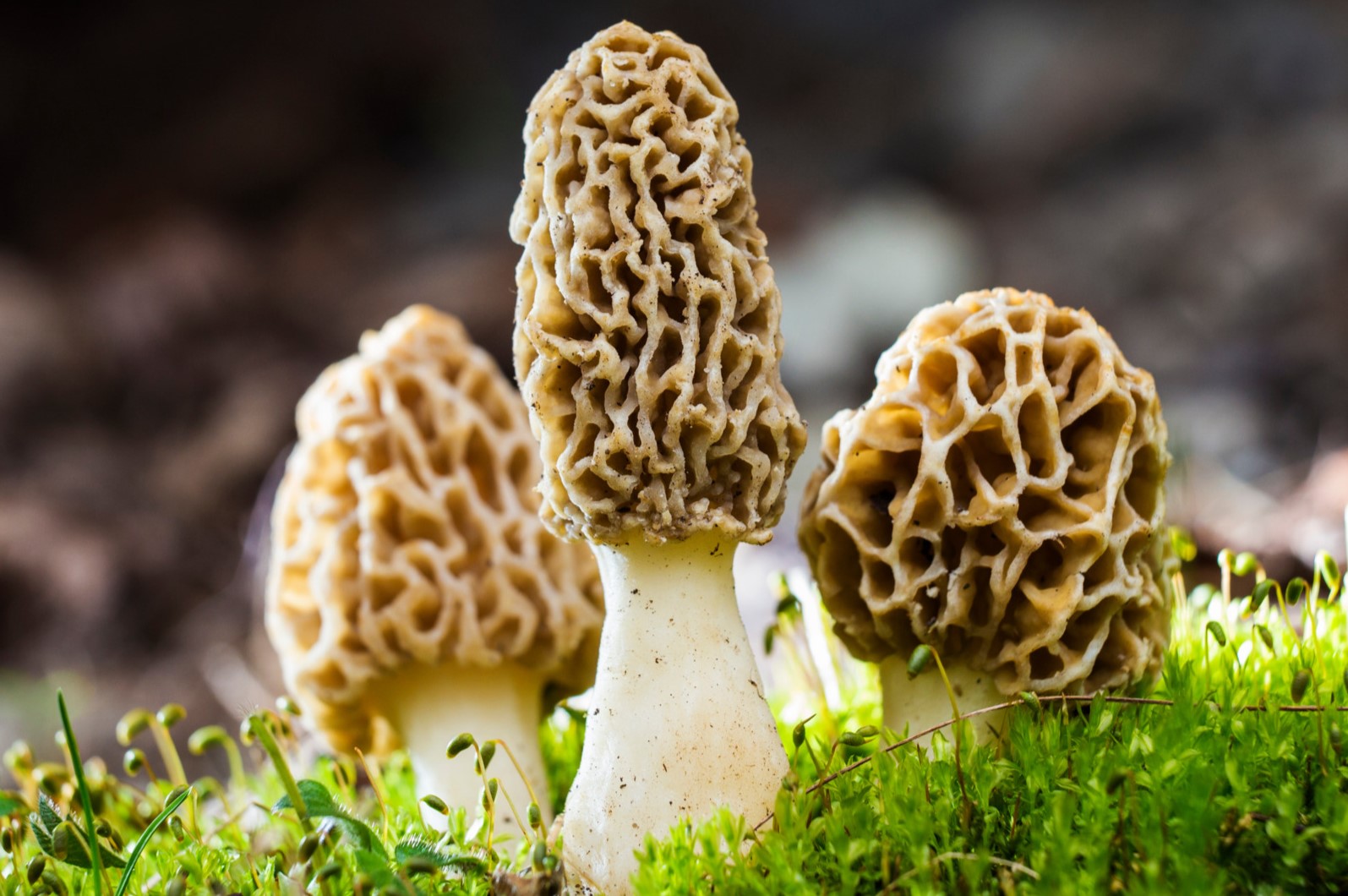
Morel mushrooms are a culinary delight, often sought after by chefs and food enthusiasts alike. These unique fungi are not just tasty but also fascinating. Did you know that morels are one of the few mushrooms that can't be cultivated commercially? This makes them a prized find for foragers. Their honeycomb-like appearance is distinctive, making them relatively easy to identify in the wild. Morels thrive in specific conditions, often popping up in the spring after a good rain. They grow near dead or dying trees, especially elms, ash, and apple trees. Foraging for morels can be a fun and rewarding outdoor activity, but it's crucial to know what you're looking for, as some mushrooms can be toxic. Ready to learn more about these intriguing fungi? Let's dive into some fascinating facts about morel mushrooms!
Key Takeaways:
- Morel mushrooms are a sought-after delicacy with a distinctive appearance and rich flavor. They are packed with nutrients, low in calories, and can be found in forests during the spring.
- Hunting for morel mushrooms is a popular activity, but it's important to correctly identify them to avoid consuming toxic varieties. These mushrooms play a crucial role in their ecosystems, supporting biodiversity and indicating a balanced forest ecosystem.
What Are Morel Mushrooms?
Morel mushrooms are a type of wild fungi known for their unique appearance and rich flavor. They are highly sought after by chefs and foragers alike. Let's dive into some fascinating facts about these intriguing mushrooms.
-
Morel mushrooms have a distinctive honeycomb-like structure, making them easy to identify in the wild.
-
They belong to the genus Morchella, which includes several species, each with slight variations in color and size.
-
Morels are considered a delicacy and can fetch high prices in markets, sometimes up to $20 per pound.
-
These mushrooms are typically found in forests, especially around dead or dying trees, as they thrive on decaying organic matter.
The Nutritional Value of Morel Mushrooms
Morels are not just tasty; they are also packed with nutrients. Here are some key nutritional facts about morel mushrooms.
-
Morels are a good source of vitamins, particularly vitamin D, which is essential for bone health.
-
They contain a significant amount of iron, which helps in the production of red blood cells.
-
Morels are low in calories, making them an excellent addition to a healthy diet.
-
They also provide a decent amount of fiber, aiding in digestion and promoting gut health.
The Hunting and Harvesting of Morel Mushrooms
Hunting for morel mushrooms is a popular activity among foragers. Here are some interesting facts about how they are found and harvested.
-
Morel mushroom hunting season typically starts in early spring and lasts until late May.
-
They are often found in areas that have recently experienced forest fires, as the disturbed soil promotes their growth.
-
Foragers use mesh bags to collect morels, allowing spores to disperse and promote future growth.
-
It's crucial to correctly identify morels, as false morels can be toxic and dangerous to consume.
Cooking and Preparing Morel Mushrooms
Morels are versatile in the kitchen and can be prepared in various ways. Here are some tips and facts about cooking with morel mushrooms.
-
Before cooking, morels should be thoroughly cleaned to remove dirt and insects that may be hiding in their crevices.
-
They can be sautéed, grilled, or even stuffed, making them a versatile ingredient in many dishes.
-
Morels pair well with butter, cream, and herbs, enhancing their earthy flavor.
-
Drying morels is a common preservation method, allowing them to be stored and used throughout the year.
The Ecological Role of Morel Mushrooms
Morels play an important role in their ecosystems. Here are some facts about their ecological significance.
-
Morels help decompose organic matter, recycling nutrients back into the soil.
-
They form symbiotic relationships with certain tree species, benefiting both the fungi and the trees.
-
Morels can indicate the health of a forest, as their presence often signifies a balanced ecosystem.
-
They contribute to biodiversity, supporting various forms of wildlife that rely on fungi as a food source.
The Final Bite on Morel Mushrooms
Morel mushrooms are fascinating. From their unique appearance to their culinary value, these fungi offer much to appreciate. They thrive in specific conditions, making them a prized find for foragers. Their honeycomb-like structure isn't just for looks; it helps them blend into their environment, making the hunt even more exciting.
Cooking with morels can elevate any dish, adding a rich, earthy flavor that's hard to beat. Remember, always cook them thoroughly to avoid any potential health risks. Whether you're a seasoned forager or a curious foodie, morels provide a delightful adventure both in the wild and in the kitchen.
So next time you're out in the woods or at a farmer's market, keep an eye out for these little treasures. Happy hunting and even happier eating!
Frequently Asked Questions
Was this page helpful?
Our commitment to delivering trustworthy and engaging content is at the heart of what we do. Each fact on our site is contributed by real users like you, bringing a wealth of diverse insights and information. To ensure the highest standards of accuracy and reliability, our dedicated editors meticulously review each submission. This process guarantees that the facts we share are not only fascinating but also credible. Trust in our commitment to quality and authenticity as you explore and learn with us.


